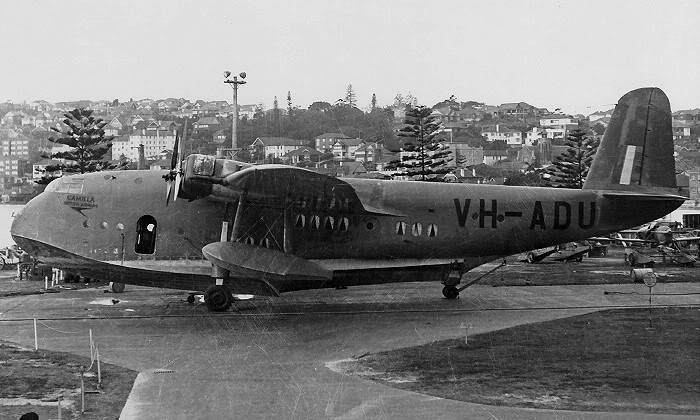Crash of a Boeing B-17E Flying Fortress off Rabaul: 8 killed
Date & Time:
May 21, 1943
Registration:
41-9244
Survivors:
No
Schedule:
Port Moresby - Dobodura - Port Moresby
MSN:
2716
YOM:
1941
Crew on board:
10
Crew fatalities:
Pax on board:
1
Pax fatalities:
Other fatalities:
Total fatalities:
8
Circumstances:
The aircraft left Port Moresby-7 Mile Airfield in the morning and flew to Dobodura where a stock of bombs was loaded. It left Dobodura to attack the Rabaul-Vunakanau Airport. While approaching the target, the aircraft what shot down by the pilot of a Japanese fighter. All four engines were hit by bullets and the captain ordered his crew to bail out but only three crewmen were able to do so. Out of control, the aircraft went into a spin and crashed into the St George Channel, off Rabaul. All eight other occupants were killed.
Crew (43rd BG):
Maj Paul I. Williams, pilot, †
2nd Lt John S. Rippy, copilot,
M/Sgt Gordon R. Manuel, bombardier,
2nd Lt Richard U. Aguirre, navigator, †
S/Sgt Robert B. Gills Jr., flight engineer, †
Sgt Edward Driscoll, radio operator, †
Sgt Lawrence L. Rexroat, air gunner, †
Sgt Robert A. Curry,
Pfc William R. Smith, air gunner, †
Sgt Joseph F. Murray, air gunner, †
Passenger:
1st Lt Robert F. Heller. †
Crew (43rd BG):
Maj Paul I. Williams, pilot, †
2nd Lt John S. Rippy, copilot,
M/Sgt Gordon R. Manuel, bombardier,
2nd Lt Richard U. Aguirre, navigator, †
S/Sgt Robert B. Gills Jr., flight engineer, †
Sgt Edward Driscoll, radio operator, †
Sgt Lawrence L. Rexroat, air gunner, †
Sgt Robert A. Curry,
Pfc William R. Smith, air gunner, †
Sgt Joseph F. Murray, air gunner, †
Passenger:
1st Lt Robert F. Heller. †
Probable cause:
Shot down by a Japanese fighter.







